

 | Fluid Dynamics & Materials Processing |  |
DOI: 10.32604/fdmp.2022.023199
ARTICLE
Feasibility Study for a Hybrid Power Plant (PV-Wind-Diesel-Storage) Connected to the Electricity Grid
1Laboratory, LEMA, Faculty of Sciences and Techniques, University of Comoros, Moroni, Comoros
2Laboratory, LERMAB, IUT Henri Poincaré of Longwy, University of Lorraine, Nancy, France
3IREMIS Institute, CUFR, University of Mayotte, Dembeni Mayotte, France
*Corresponding Author: Kassim Mohamed Aboudou. Email: kassim2005k@gmail.com
Received: 14 April 2022; Accepted: 09 May 2022
Abstract: In this work, we present a feasibility study for a new hybrid power plant (PV-Wind-Diesel-Storage) directly connected to the electrical grid. Several simulations are performed to verify the performance of the hybrid system under different scenarios using real meteorological data. It is shown that the performances of the hybrid system connected to the electrical network depend obviously on the available energy resources and constraints because the renewable energies are intermittent. In addition, the price of the kWh of electricity supplied by the hybrid system is determined, which amounts to $0.209/kWh, which is very cost effective and satisfactory for the considered sample conditions (Comoros Island).
Keywords: Hybrid energy; renewable energy; HOMER; connected grid
Nomenclature
| Ah | Ampere-hour |
| d | Day |
| kW | kilowatt |
| kWh | kilowatt-hour |
| m | meter (m) |
| PV | Photovoltaic |
| t | volumetric heat generation density (s) |
| yr | Year |
| $ | Dollard |
| Gon | normal extraterrestrial radiation (kW/m2) |
| Gsc | Solar constant (kW/m2) |
| n | day of the year from 1 and 365 |
| p | Power (kW) |
| ρ | Air density (kg/m3) |
| A | Surface crossed by the wind (m2) |
| V | Wind speed (m/s) |
| CP | Power coefficient of the turbine |
Electricity is now the easiest form of energy to operate. But before consuming it took to produce it, usually in units of production of high-power electricity generation, transport, and distribute it to each consumer. This represents a heavy financial burden for local electrification in isolated areas of our country. Several studies available in the literature have been conducted for the production of hybrid energy in the rural area in Comoros but without injection in the national electricity network grid [1]. This is done by the presence of constraints due to the weather including wind, temperature gradients between the different seasons and between night and day for the winter season [2]. In the other hand, a recent work [3] has been conducted in the field of hybrid systems. However the proposed work is a combination of three sources of energy such as solar, wind and diesel connected to the network for the continuous production of electrical energy to supply telecommunication towers in the Comoros in their energy requirement. It is well known that large-scale wind and solar photovoltaic connected to the network have proven economically for many parts of the rural world [2]. However, the design of autonomous power sources for small-scale use in remote locations or outside the network has yet to reach a commercially viable stage [4]. The introduction of mini-power plants connected to the grid would respond to pressure on electricity demand, especially in the day, constantly growing [2]. So in this work, we studied the mini power photovoltaic performance connected to the grid. The injection of the electrical energy produced by these mini-plants will rectify the voltage and simultaneously improve the power especially when the peak demand is in line with the intensity of sunlight received [3]. A case study was performed to study the feasibility of a hybrid connected to the power line system in a real rural village in Comoros. The selected rural village is located in the vicinity of the capital of the Mitsamiouli region of Grande Comore continually growing [5].
So in this work, we studied the mini power photovoltaic performance connected to the grid. The injection of the electrical energy produced by these mini-plants will rectify the voltage and simultaneously improve the power especially when the peak demand is in line with the intensity of sunlight received [6,7].
We present in Fig. 1 the relative diagram HOMER program, the hybrid system. The system studied consists of a wind generator type Generic 3 kW, a photovoltaic power generator 1 kW, a power generator 75 kW, the electric charge on the equipment, the value is 120 kW/day peaking at 8 kilowatts, is fed by the H1000 type batteries, rated voltage of 12 V and a nominal capacity of 200 Ahthrough a nominal power converter 1 kW [8,9]. These batteries are loaded by the current delivered by each of the systems, controlling their charge is provided by a charge controller [5]. The entire system is connected to the power grid to ensure continuity of electricity in the locality.
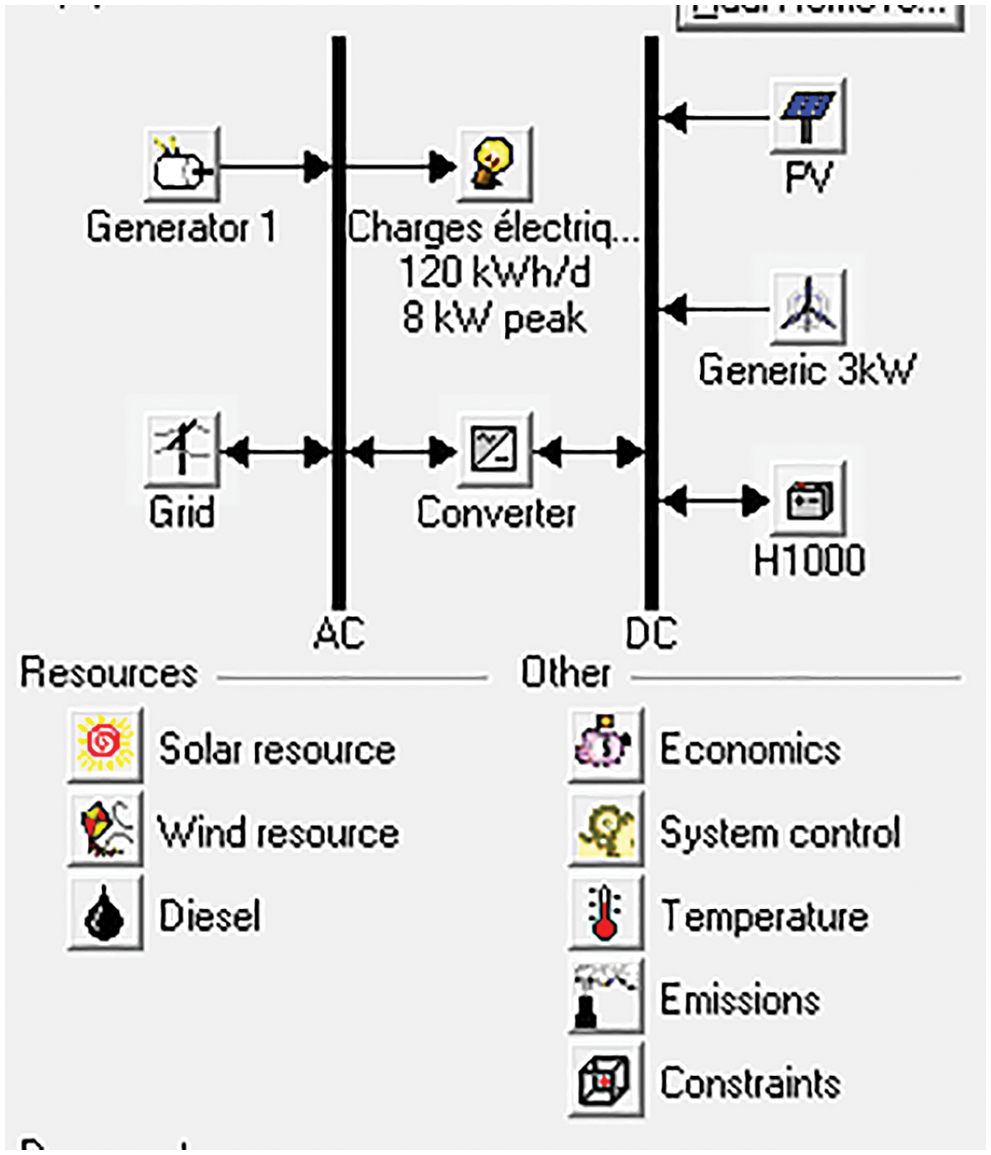
Figure 1: Architecture of the hybrid system
2.1 Data of the Chosen Location Site and Climatic Characteristics
Our implantation site belongs to the northern region in Grande Comores Island and whose geographical coordinates are: Latitude: 18°8′ South and Longitude: 44°15′ East. The choice of the site was based on the availability of meteorological data. So we give the diagrams below the annual evolution of the main climatic characteristics of the chosen site [10–13]:
Fig. 2 representing the temperature is recorded from the month of August with a temperature of about 29°C. On the other hand, the months of January, March, April, November and December are the months that recorded the maximum temperature of 33°C.

Figure 2: Annual profil in temperature
The annual evolution of solar radiation is presented in Fig. 3. We observe that, in October sunshine was recorded very important which is approximately 6.13 kWh/m2/d. On the other hand, June that is when we observed a drop in sunshine with value of 4.6 kWh/m2/d [14,15]. Indeed solar radiation as HOMER is determined by the following relationship:
Gon=Gsc(1+0.33cos360n365) (1)

Figure 3: Annual evolution of solar radiation
We present in the Fig. 4 the average kinetic energy, available on a given site, per unit time and per unit area, due to the wind speed [3]:
P=12ρAV3Cp (2)
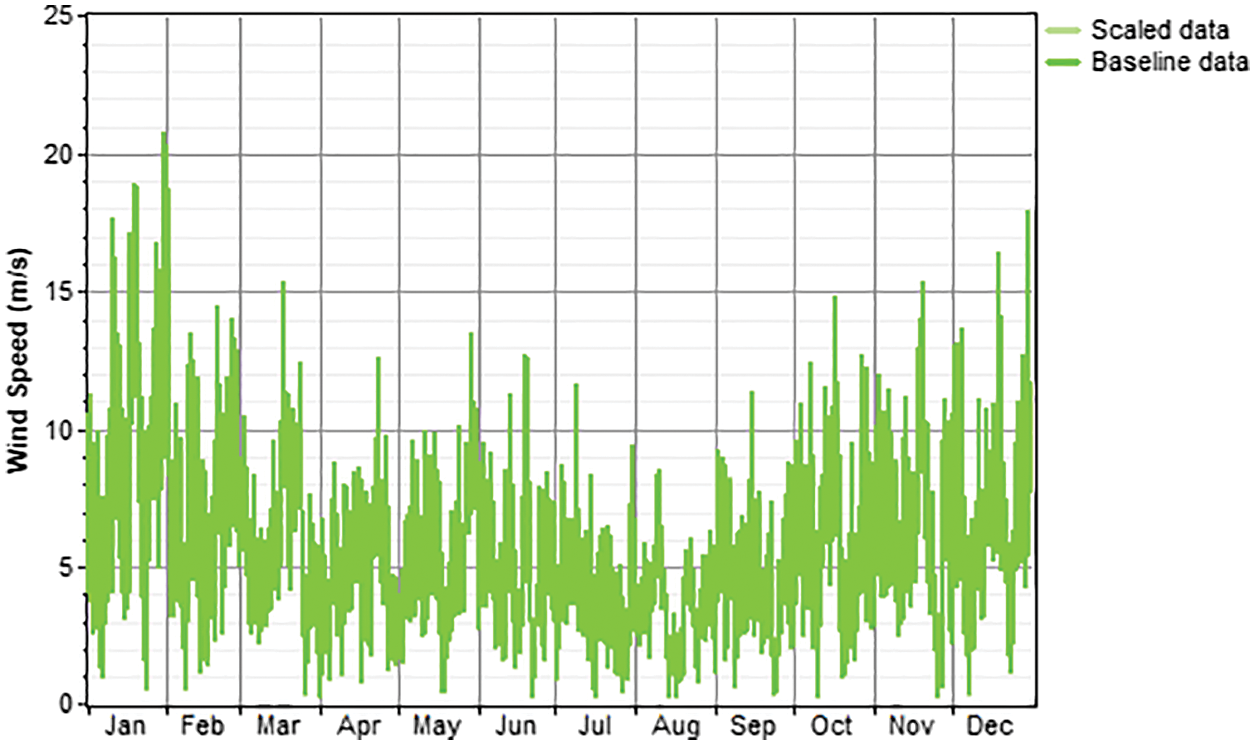
Figure 4: Annual evolution of wind speed
It is from January that we record the speed of the largest wind with 8.5 m/s while the month of August 01 lower speed is observed, which the order of 3.5 m/s.
Wind speed probability based on its distribution is presented in Fig. 5. For a maximum frequency of 15% the speed is approximately 6 m/s.
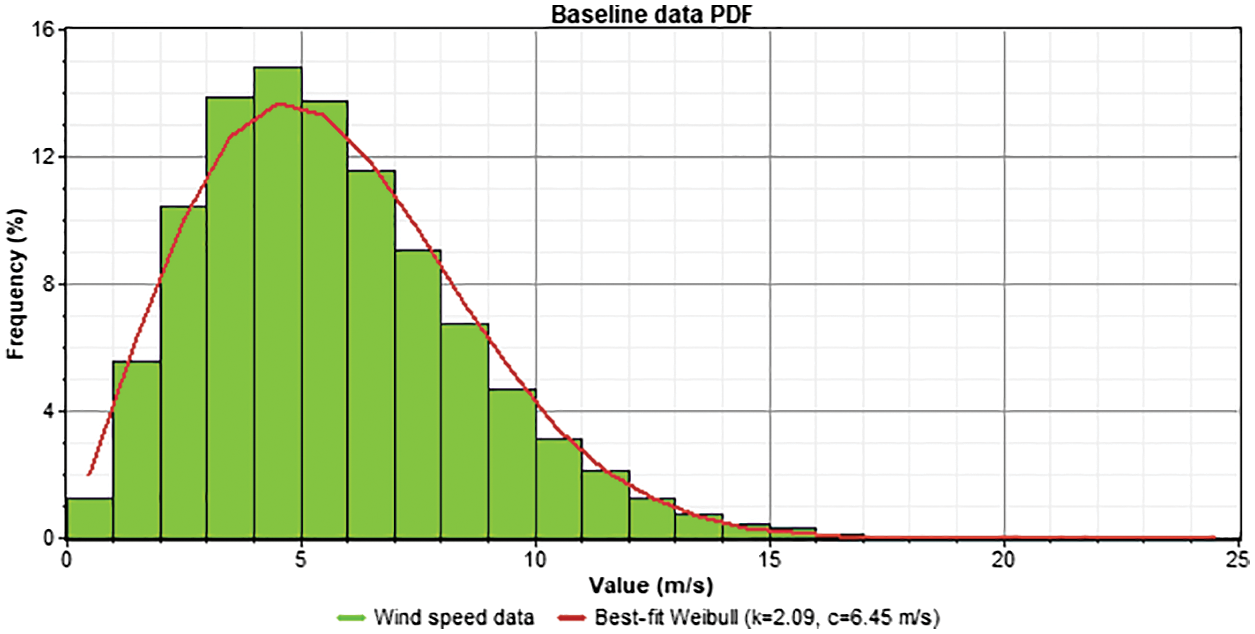
Figure 5: Wind speed probability based on its distribution
2.2 Characteristics of the Selected Load
In our study we chose an AC load type continuously running throughout the year with an average of 120 kWh/day and a peak of 8 kW. The daily load profile and the annual evolution of the latter in during all the year are given respectively in Figs. 4 and 5. In Fig. 6, the load is maximum is constant from 18 and 21 h with an estimated load in the order of 8 kW [16–18].
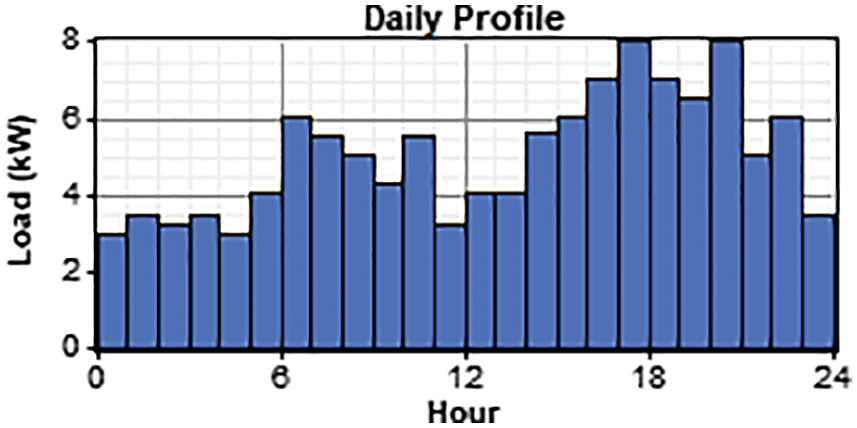
Figure 6: Daily electrical load profile
Annual profile of the electric charge is presented in Fig. 7. Note well that is almost constant with a minimum of 3 kW and a maximum of 8 kW [19].
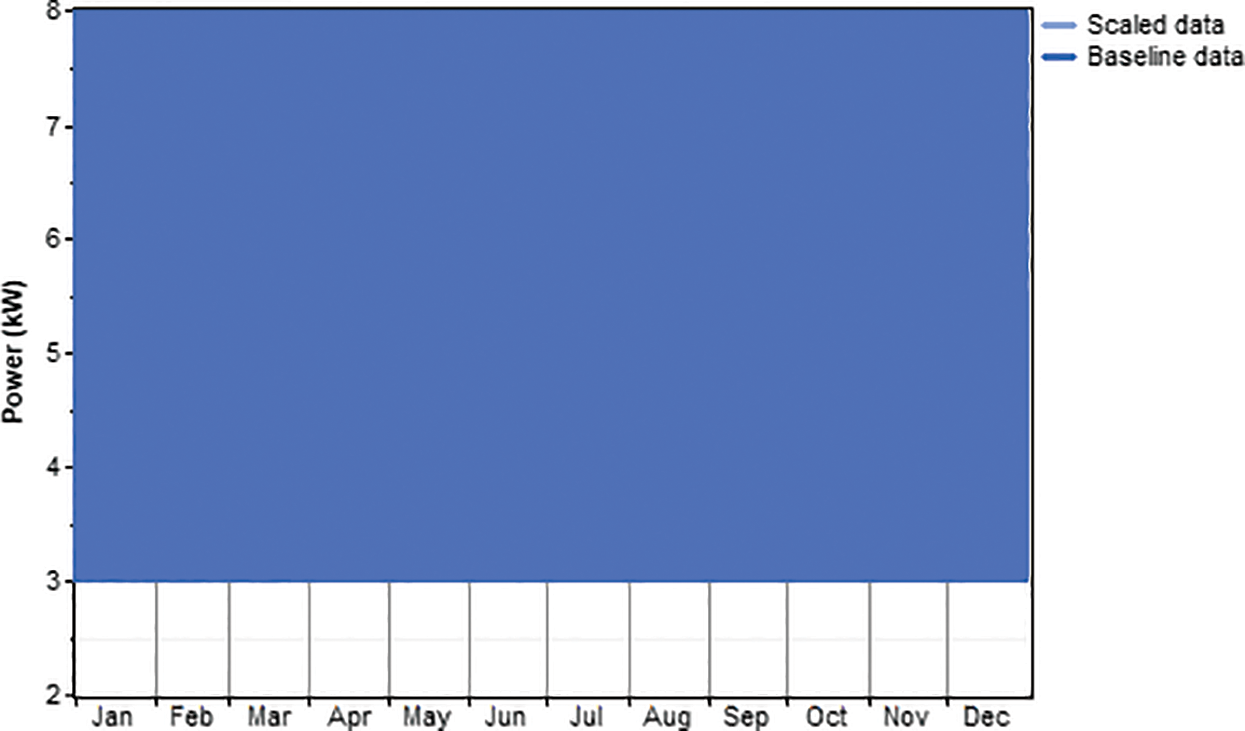
Figure 7: Annual profile of the electric charge
In order to reach an economically feasible and technically reliable result, we use the design software HOMER Energy.
This software, HOMER, is a very important and useful tool for the analysis and comparison of different possible combinations of the sources used in hybrid systems [20]. It was designed by scientists at the National Renewable Energy Laboratory ‘NREL’ for the design and optimization of energy systems involving multiple sources. It determines the best configuration of the system by running a series of simulations during which all-possible cases are tested. After demonstrating the feasibility of a configuration, the software gives Homer installation and operating costs of the system. In Fig. 8, based on consumer profiles listed above, HOMER gives us architecture of a hybrid system composed of 40 kW solar panel, a generator 75 k, an inverter and controller 20 kW whose whole system is connected to the mains [21]. But the possibility of other architectures such as a compound of PV hybrid system/Wind/Diesel connected to the network is also possible by varying the sunlight to 4.5 kWh/m2/d; and letting the wind speed and the price of diesel in optimal conditions. This is also the systems that we consider so we can make the maximum possible optimization.

Figure 8: Results obtained with optimal order of feasibility
The cash flow is presented in Fig. 9 and we observe that, our system is cost effective because for 25 years there will be more loss that supplies fuel to the generator and a spare but the project will have a huge cost to the last year of its installation [10]. The replacement of material must take place from the 20th of year of the project.

Figure 9: Curve cash flow
3.1 Annual Electricity Production
The Fig. 10 presents the annual electricity production system. Throughout the year, our system produces 91.543 kWh/year. The photovoltaic generator produces most 63% (57.236 kWh/year) of energy. The generator intervenes only 8% (6,885 kWh/year), wind 7% (6,540 kWh/year) and the network produces only 23% or 20.882 kWh/year [1]. It is important to note that in July the share of the diesel generator and the wind turbine is not significant. The national network system operates with a maximum of power around 2.8 kW while the photovoltaic system takes over from 3 kW up to 9.5 kW.

Figure 10: Annual electricity production system
This phenomenon is due to the unavailability of the wind during this period with low speed. We note that in this period the energy consumption is very high because of the wedding festivities that are recurrent in Comoros Islands.
3.2 Conditions for Different Energy Sources
To better see and understand the limited use of the generator, we compared, in the Fig. 11, the supply of the PV generator, wind, and diesel generator to the load profile. For this, we have shown in the same graph, the corresponding curves. PV curve is the more dominant of course relative to the wind and diesel. It is very dominant because it exceeds even the load profile [3]. This domination of PV is detected in Fig. 10.
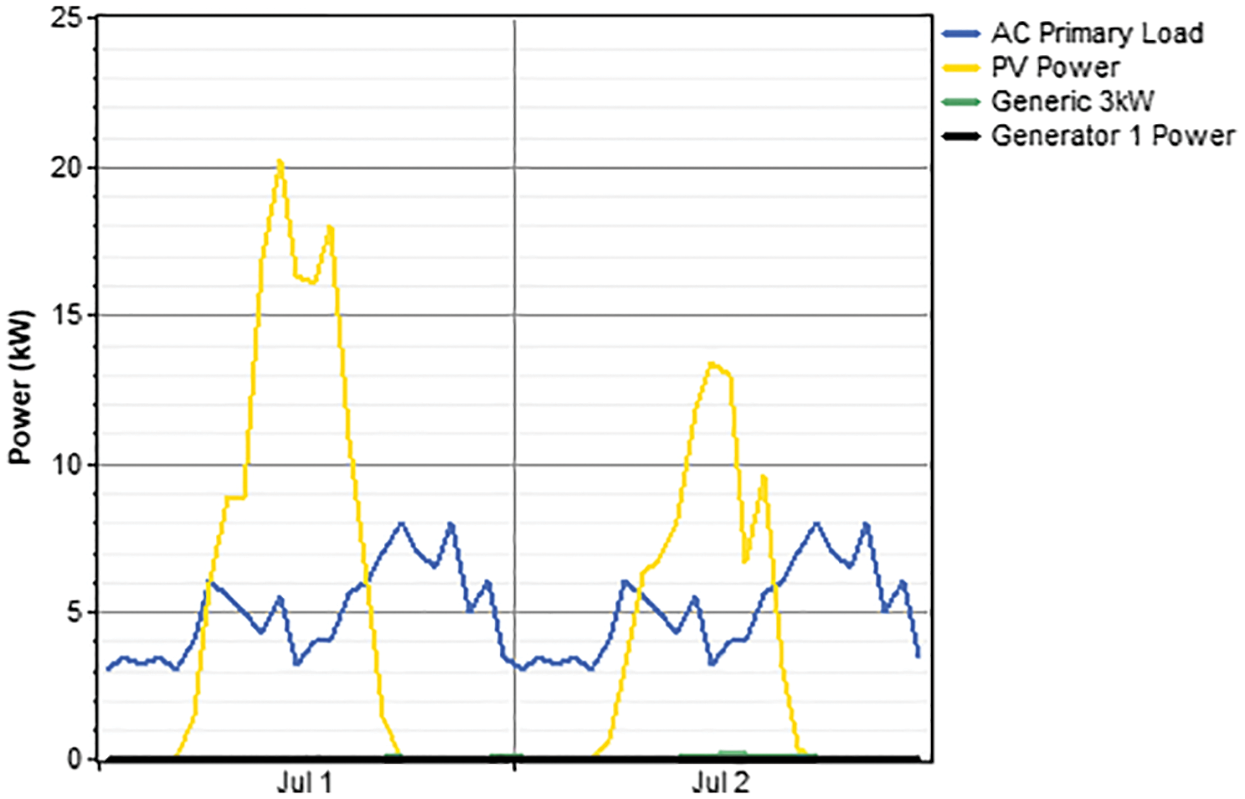
Figure 11: Load curves, PV, wind and diesel of 01 to 02 July
Fig. 12 represents the evolution of wind speed with global solar energy. Price of diesel is fixed at $0.8/L. In this figure, we observe that the hybrid system Grid/PV/GE dominates for wind speed under to about 5 m/s. In this observation we can deduce that for wind speed under to this value, Wind system is not feasible while a wind speed over to 5 m/s the two hybrid system Grid/Wind/PV/GE and Grid/Wind/GE are both feasible. It is important to note that the PV system PV intervenes when global solar is higher than 3.5 kWh/m2/d. The most economically feasible system is that of Grid/Wind/PV/GE because the whole hybrid system participates to the production of electricity.
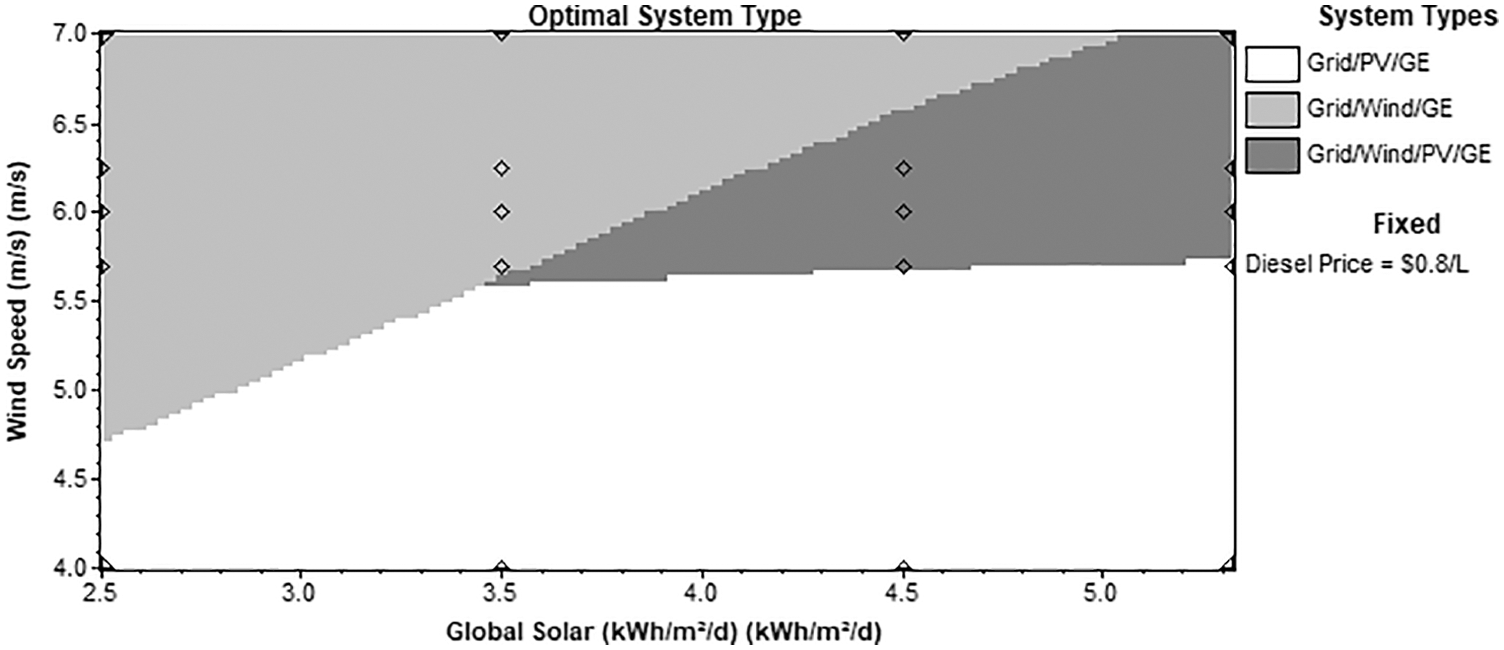
Figure 12: Hybrid system obtained with fixing the price of diesel at $0.8/L
Hybrid system with a fixing irradiation of 5.32 kWh/m2/d is presented in Fig. 13. Two feasible hybrid system are detected here respectively Gird/PV/GE and Grid/Wind/PV/GE. In this figure, we observe that for a wind speed under to 5.75 m/s, hybrid system Grid/PV/GE is feasible while beyond this value the combination Grid/Wind/GE is the more feasible economically. The most economically feasible hybrid system is one whose wind speeds exceeds 5.75 m/s.
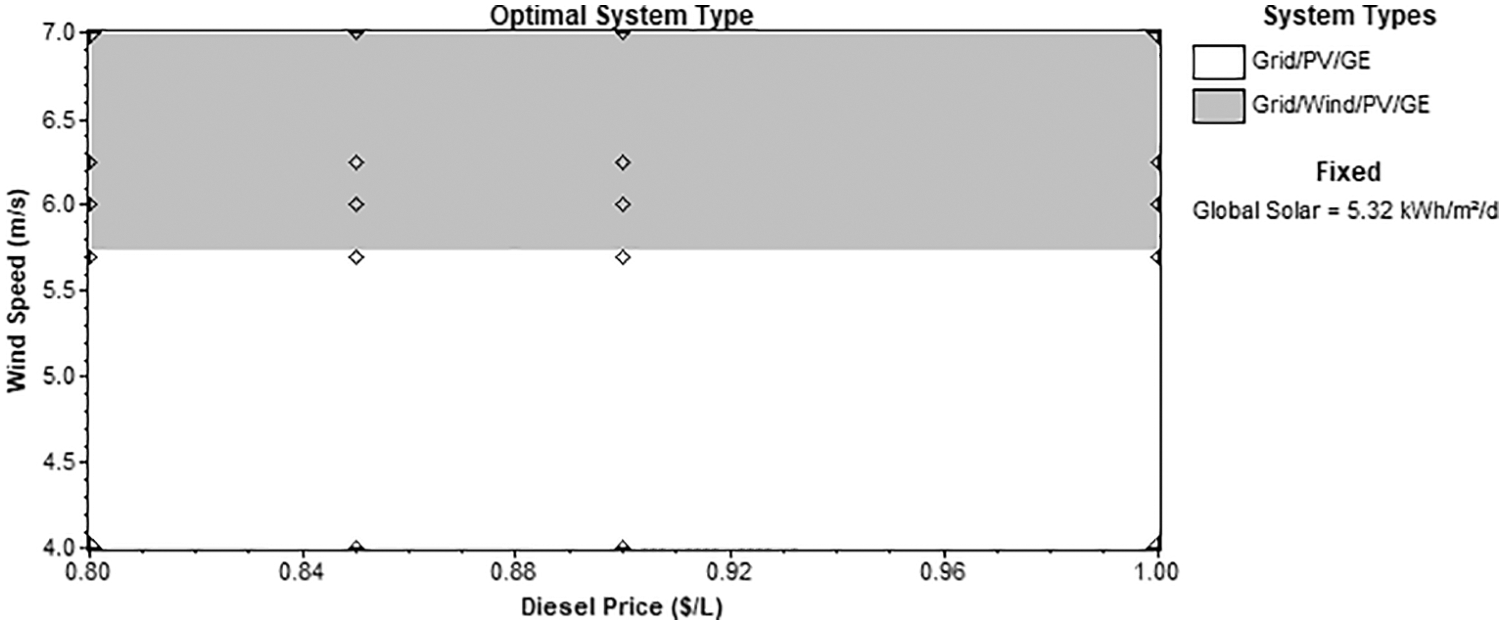
Figure 13: Hybrid systems obtained with fixing irradiation 5.32 kWh/m2/d
In the Fig. 14, we present the evolution of global solar by varying the price of fuel with a fixing value of 6.25 m/s for wind speed. In this aspect, the most advantageous hybrid system Grid/Wind/PV/GE is obtained for global solar irradiations over to 4.2 kWh/m2/d.
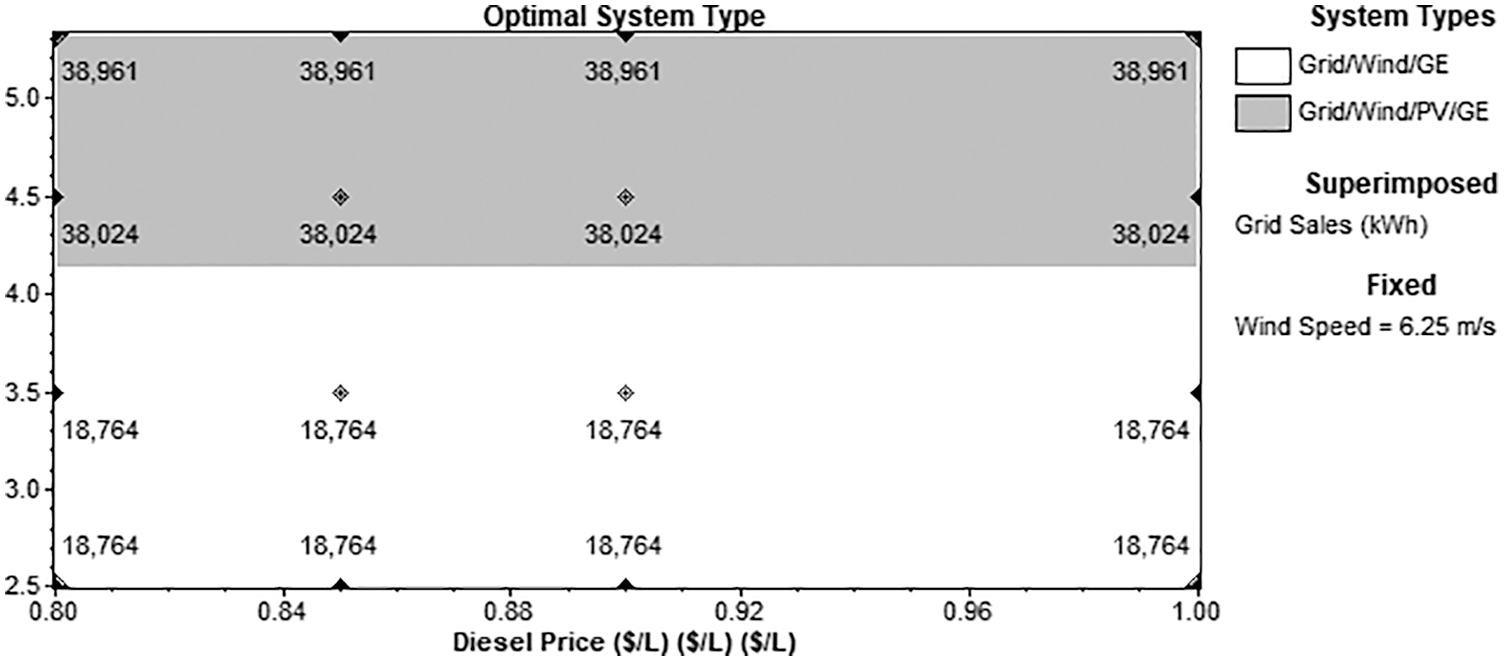
Figure 14: Hybrid systems obtained by fixing the wind speed 6.25 m/s
The system of emissions during operation is due to the diesel generator. These emissions are relatively low because of the low rate of operation of the generator. The quantity of emissions is low and it should be noted that these pollutants are the production of electricity by the network; otherwise, if the photovoltaic generator does not emit any greenhouse gas emissions.
This study is related to the feasibility study of a hybrid system (photovoltaic-wind-diesel-storage) with electrical energy supply connected to the electrical grid using the HOMER Energy software. However, we determined the price of the kWh of electricity supplied by the hybrid system composed of PV/Wind/Diesel/Storage connected to the electrical grid and which amounts to $0.209/kW with a NPC = $117,179 this price is very far from being compared to the price of the kilowatt-hour of the hybrid systems composed of PV/Wind/Diesel connected to the grid which amounts to $0.185/kW with a NPC = $103,360. For the other configurations like PV/Diesel and PV/Diesel/Storage also differ on the price per kWh and NPC whose values are respectively equal to $0.184/kWh with a NPC = $103,293 and $0.209/kWh with a NPC = $117,112 [2]. The site considered in this study is the Koua site in the north of the Greater Comoros in the prefecture of Mitsamiouli. Thus, we deduced from this work on the one hand that the configuration of the hybrid system obviously depends on the available energy resources as well as the constraints of uses such as if the price of fuel is 0.85 $/l and the annual average of the wind speed is 5.7 m/s and that of the solar irradiation of 4, 5 kWh/m²/d, the PV/wind/diesel system without storage that is connected to the electrical grid is the most profitable with a price of the kWh that is estimated at $0.195/kWh, a NPC = $109,144, a CO2 emission estimated at 1985 kg/year and an excess of electricity estimated at 70% of the total production [9]. This configuration is much more profitable. On the other hand, we have highlighted the role of the use of renewable energy in the reduction of gas emissions because the studied system has given quality to the electrical production [3]. It allows to reduce significantly the greenhouse gas emissions (the CO2 rate = 7,337 kg/year for a system using only the generator and PV without storage and it is 1,985 kg/year for the studied hybrid system PV/Wind/Diesel). This study will allow electrifying these isolated areas of Comoros for energy stability but it will allow us in a future approach to develop electrification systems of the rural villages of Comoros with 100% of renewable energy.
Funding Statement: The authors received no specific funding for this study.
Conflicts of Interest: The authors declare that they have no conflicts of interest to report regarding the present study.
1. Aboudou, K. M., Ganaoui, M. E. (2019). Design of a hybrid system for rural area electricity supply in Comoros. Journal of Power and Energy Engineering, 7(2), 59–78. DOI 10.4236/jpee.2019.72005. [Google Scholar] [CrossRef]
2. Abdelbari, R., Abdelmajid, E., Taib, A., Hassan, E. (2013). Study of a hybrid power generation system for independent use in Tétouan region of Morocco. 16th Days of International Thermal, Marrakech, Morocco. [Google Scholar]
3. Maoulida, F., Aboudou, K. M., Joseph Onymihamina Rakoto, J. O., Ganaoui, M. E. (2008). Design of a hybrid system for the power supply of a telecommunications tower in the Comoros. International Symposium Francophone Energetics and Mechanics. Cotonou, Benin. https://hal.archives-ouvertes.fr/hal-01882293/document. [Google Scholar]
4. Iqbal, M. T. (2004). A feasibility study of a zero energy home in Newfoundland. Renewable Energy, 29(2), 277–289. DOI 10.1016/S0960-1481(03)00192-7. [Google Scholar] [CrossRef]
5. Aboudou, K. M., Ganaoui, M. E. (2017). Feasibility study of stand-alone hybrid energy system for implementation of buildings in rural areas in Comoros. International Conference on Materials & Energy & Symposium ICAPM, Tianjin, China. http://www.icome.ecam-epmi.fr/img/Livret2017.pdf. [Google Scholar]
6. Beccali, M., Brunone, S., Cellura, M., Franzitta, V. (2008). Energy, economic and environmental analysis on RET-hydrogen system in residential buildings. Renewable Energy, 33(3), 366–382. DOI 10.1016/j.renene.2007.03.013. [Google Scholar] [CrossRef]
7. Aboudou, K. M., Ganaoui, M. E. (2017). Feasibility study for the generation of electricity using a hybrid PV-Wind-Generator system in a remote area in Comoros. International Journal of Research and Reviews in Applied Science, 33(2), 23–36. [Google Scholar]
8. Khan, M. J., Iqbal, M. T. (2005). Pre-feasibility study of stand-alone hybrid energy systems for applications in Newfoundland. Renewable Energy, 30(6), 835–854. DOI 10.1016/j.renene.2004.09.001. [Google Scholar] [CrossRef]
9. Saheb-Koussa, D., Haddadi, M., Belhamel, M. (2010). Feasibility study and optimization of an hybrid system (eolian-photovoltaic-diesel) with provision of electric energy completely independent. Journal of Fundamental and Applied Sciences, 2(1), 86–97. DOI 10.4314/jfas.v2i1.8. [Google Scholar] [CrossRef]
10. Maoulida, F., Rabah, D., Ganaoui, M. E., Aboudou, K. M. (2021). PV-wind-diesel system for energy supply on remote area applied for telecommunication towers in Comoros. Open Journal of Energy Efficiency, 10(2), 50–72. DOI 10.4236/ojee.2021.102004. [Google Scholar] [CrossRef]
11. Aboudou, K. M., Maoulida, F., Ganaoui, M. E. (2018). PV-wind hybrid energy system for application of buildings in rural areas in Comoros. International Conference on Materials and Energy, San Sebastian, Spain. http://www.icome.ecam-epmi.fr/img/Livret2018.pdf. [Google Scholar]
12. Dutton, A. G., Bleijs, J. A. M., Dienhar, H., Falchetta, M., Hug, W. et al. (2000). Experience in the design, sizing, economics, and implementation of autonomous wind-powered hydrogen generation systems. International Journal of Hydrogen Energy, 25(8), 705–722. DOI 10.1016/S0360-3199(99)00098-1. [Google Scholar] [CrossRef]
13. Aboudou, K. M., Ganaoui, M. E. (2017). Design of a hybrid system for electricity supply to the mix energetic. International Conference on Energy, Environment and Climate Change, Mauritius. http://iceecc.org/registration.html. https://www.uom.ac.mu/FOe/index.php/102-archives/conferences [Google Scholar]
14. de Almeida, A. T., Martins, A., Jesus, H., Climaco, J. (1983). Source reliability in a combined wind-solar-hydro system. IEEE Transactions on Power Apparatus Systems, 102(6), 1515–1520. DOI 10.1109/TPAS.1983.317879. [Google Scholar] [CrossRef]
15. Elhadidy, M. A., Shaahid, S. M. (2000). Parametric study of hybrid (wind + solar + diesel) power generating systems. Renewable Energy, 21(2), 129–139. DOI 10.1016/S0960-1481(00)00040-9. [Google Scholar] [CrossRef]
16. Shaahid, S. M., Elhadidy, M. A. (2005). Optimal sizing of battery storage for stand-alone hybrid (photovoltaic + diesel) power systems. International Journal of Sustainable Energy, 24(3), 155–166. DOI 10.1080/14786450500292188. [Google Scholar] [CrossRef]
17. Shaahid, S. M., Elhadidy, M. A. (2008). Economic analysis of hybrid photovoltaic-diesel-battery power systems for residential loads in hot regions–A step to clean future. Renewable and Sustainable Energy Reviews, 12(2), 488–503. DOI 10.1016/j.rser.2006.07.013. [Google Scholar] [CrossRef]
18. Nayar, C. V., Phillips, S. J., James, W. L., Pryor, T. L., Remmer, D. (1993). Novel wind/diesel/battery hybrid energy system. Solar Energy, 51(1), 65–78. DOI 10.1016/0038-092X(93)90043-N. [Google Scholar] [CrossRef]
19. Luiz, C. G. V., Silvio, C. A. A. (1998). Economic analysis of diesel/photovoltaic hybrid system for decentralized power generation in northern Brazil. Energy, 23(4), 317–323. DOI 10.1016/S0360-5442(97)00094-7. [Google Scholar] [CrossRef]
20. Elhadidy, M. A., Shaahid, S. M. (1999). Optimal sizing of battery storage for hybrid (wind + diesel) power systems. Renewable Energy, 18(1), 77–86. DOI 10.1016/S0960-1481(98)00796-4. [Google Scholar] [CrossRef]
21. Elhadidy, M. A., Shaahid, S. M. (2004). Promoting of hybrid applications (photovoltaic + wind + diesel + battery) power systems in hot regions. Renewable Energy, 29(4), 517–528. DOI 10.1016/j.renene.2003.08.001. [Google Scholar] [CrossRef]
 | This work is licensed under a Creative Commons Attribution 4.0 International License, which permits unrestricted use, distribution, and reproduction in any medium, provided the original work is properly cited. |